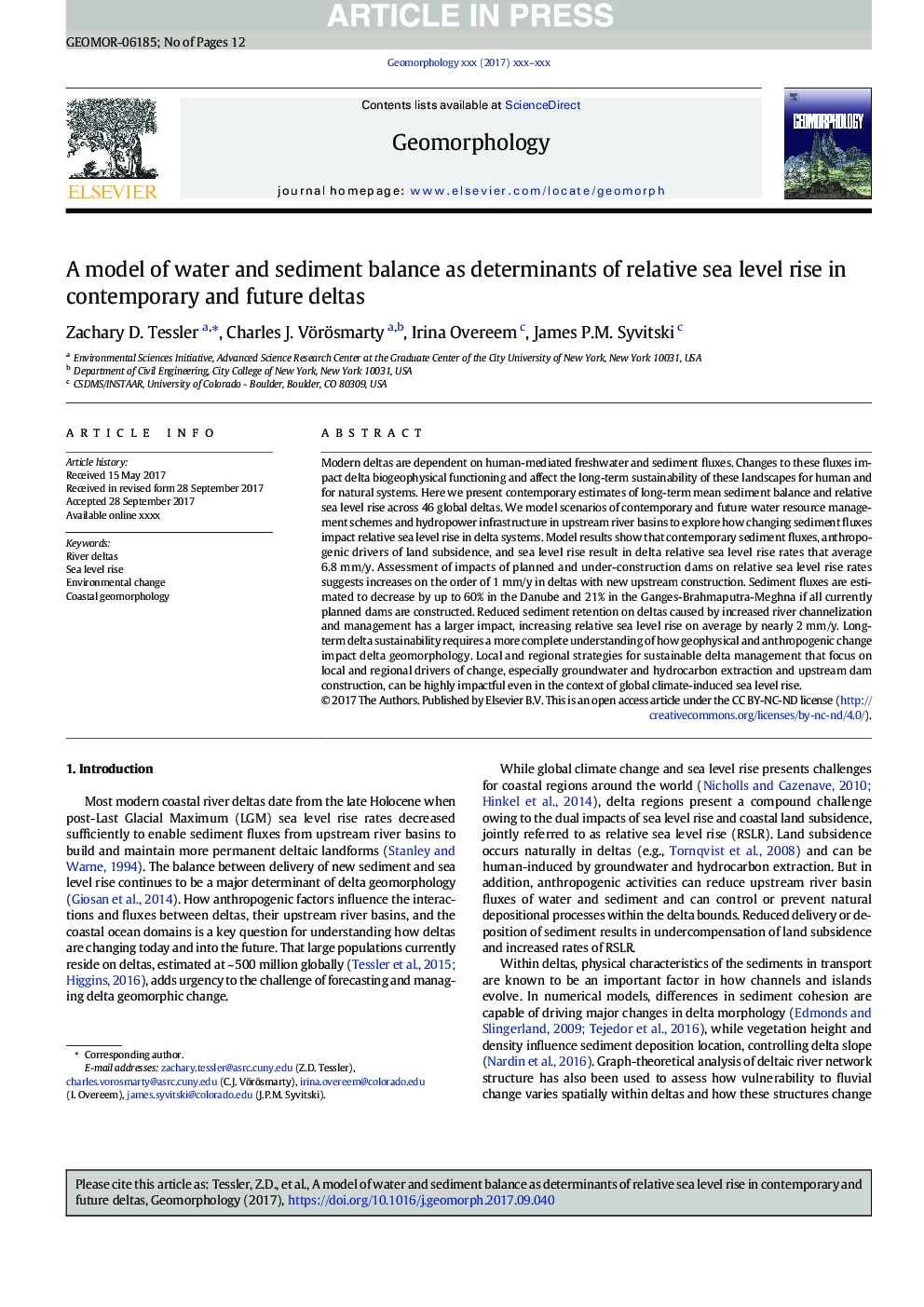| Article ID | Journal | Published Year | Pages | File Type |
|---|---|---|---|---|
| 8908168 | Geomorphology | 2018 | 12 Pages |
Abstract
Modern deltas are dependent on human-mediated freshwater and sediment fluxes. Changes to these fluxes impact delta biogeophysical functioning and affect the long-term sustainability of these landscapes for human and for natural systems. Here we present contemporary estimates of long-term mean sediment balance and relative sea level rise across 46 global deltas. We model scenarios of contemporary and future water resource management schemes and hydropower infrastructure in upstream river basins to explore how changing sediment fluxes impact relative sea level rise in delta systems. Model results show that contemporary sediment fluxes, anthropogenic drivers of land subsidence, and sea level rise result in delta relative sea level rise rates that average 6.8Â mm/y. Assessment of impacts of planned and under-construction dams on relative sea level rise rates suggests increases on the order of 1Â mm/y in deltas with new upstream construction. Sediment fluxes are estimated to decrease by up to 60% in the Danube and 21% in the Ganges-Brahmaputra-Meghna if all currently planned dams are constructed. Reduced sediment retention on deltas caused by increased river channelization and management has a larger impact, increasing relative sea level rise on average by nearly 2Â mm/y. Long-term delta sustainability requires a more complete understanding of how geophysical and anthropogenic change impact delta geomorphology. Local and regional strategies for sustainable delta management that focus on local and regional drivers of change, especially groundwater and hydrocarbon extraction and upstream dam construction, can be highly impactful even in the context of global climate-induced sea level rise.
Related Topics
Physical Sciences and Engineering
Earth and Planetary Sciences
Earth-Surface Processes
Authors
Zachary D. Tessler, Charles J. Vörösmarty, Irina Overeem, James P.M. Syvitski,
